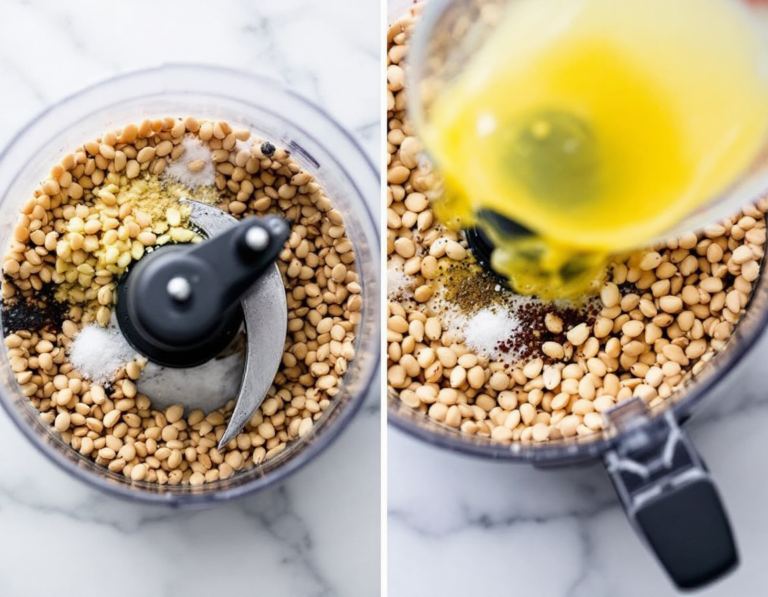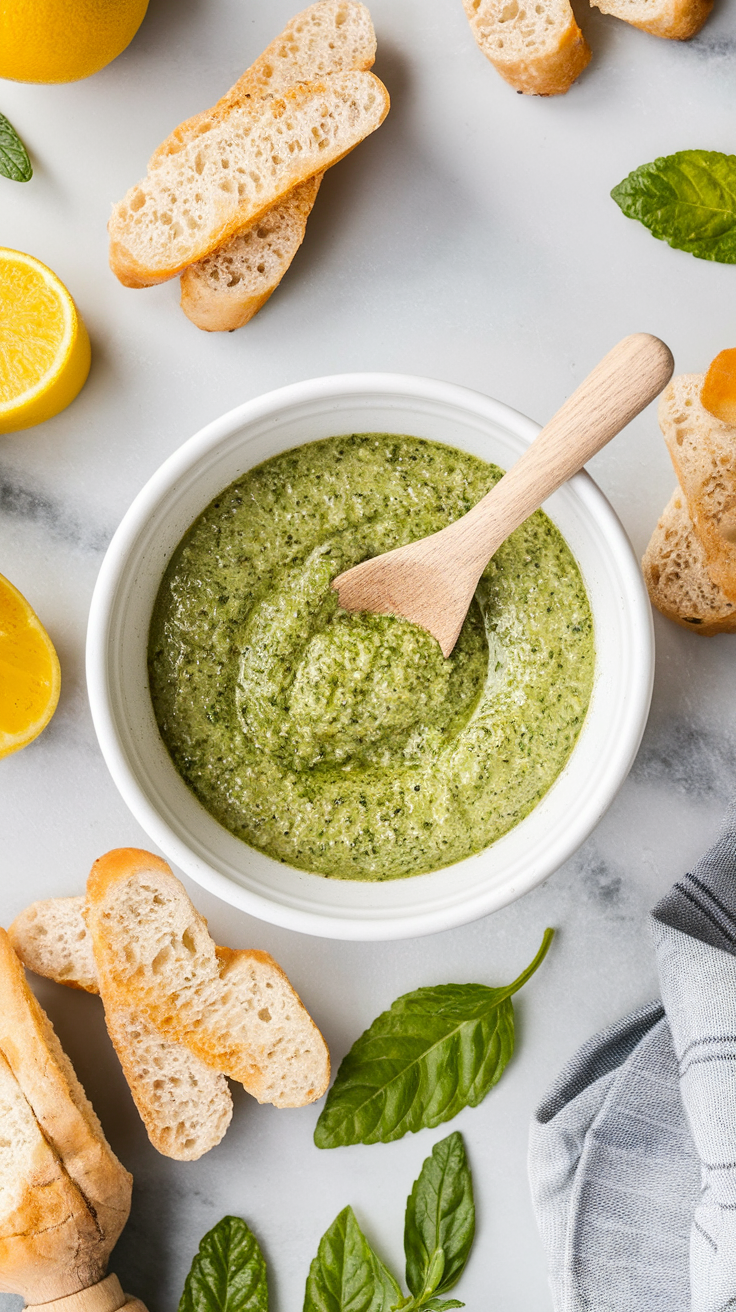There’s something undeniably magical about whipping up a batch of homemade pesto—it’s like bottling up the essence of summer in a vibrant green sauce. Picture this: fresh basil leaves, a hint of garlic, and the nutty warmth of pine nuts, all blended into a symphony of flavors.
Oh, and a splash of olive oil—can’t forget that! Whether you’re a kitchen pro or just dabbling, this easy recipe will have you hooked.
Steps
- Begin by placing the pine nuts, lemon juice, garlic, salt, and pepper into a food processor. Pulse them together until they are finely chopped.
- Add fresh basil leaves to the mixture and pulse again until everything is well combined.
- While the processor is running, slowly drizzle in the olive oil. Continue to pulse until the mixture reaches your desired consistency.
- If you’re using Parmesan cheese, add it now and pulse briefly to incorporate. Adjust the amount of olive oil for a smoother texture if needed.
- Transfer the pesto to an airtight container. To maintain its fresh green color, cover the surface with plastic wrap or a thin layer of olive oil before sealing. Store it in the refrigerator for a few days.

Ingredients
- 1/2 cup pine nuts
- 2 tablespoons lemon juice
- 1 clove garlic
- Salt, to taste
- Pepper, to taste
- 2 cups fresh basil leaves
- 1/2 cup extra-virgin olive oil, plus more if needed
- 1/4 cup grated Parmesan cheese (optional)
FAQ
- What ingredients do I need to make traditional pesto?
- Traditional pesto is made with fresh basil, garlic, pine nuts, extra-virgin olive oil, and Parmesan cheese. For a vegan version, you can omit the cheese.
- How can I prevent my pesto from turning brown in the fridge?
- To keep your pesto fresh and green, cover its surface with a thin layer of plastic wrap or a little extra drizzle of olive oil before sealing it in an airtight container.
- Can I make pesto without using pine nuts?
- Yes, you can substitute pine nuts with other nuts such as walnuts, almonds, or pistachios. For a nut-free version, consider using pepitas or hemp seeds.
- What are some variations I can try with my pesto?
- You can experiment by replacing basil with other herbs like mint, cilantro, or parsley. You can also add ingredients like sun-dried tomatoes, roasted red peppers, or even avocado for additional flavors.
- What are some creative ways to use pesto?
- Besides tossing it with pasta, you can add pesto to a Caprese salad, grain bowls, spaghetti squash, mac and cheese, polenta, homemade pizza, or even scrambled eggs.
Tips
- To prevent your pesto from turning brown, cover it with a thin layer of plastic wrap or a drizzle of olive oil before sealing it in an airtight container.
- Experiment with different nuts or seeds by swapping out the traditional pine nuts for walnuts, almonds, pistachios, pepitas, or hemp seeds to create unique flavor variations.
- Try using different herbs or greens for a fresh twist, such as replacing basil with mint, cilantro, parsley, arugula, or kale. You can also add artichoke hearts, roasted red pepper, or avocado for extra flavor and texture.
- Enhance the taste by adding ingredients like sun-dried tomatoes, charred jalapeño, nutritional yeast, or red pepper flakes to give your pesto an extra kick.
Equipment
- Food Processor (e.g., Cuisinart)

